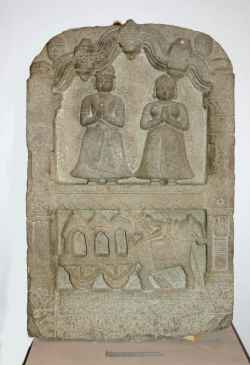Keyword: Gender
Sacrificed Wife, Sacrificer's Wife: Women, Ritual, and Hospitality in Ancient India
New York: Oxford University Press, 1996.
Throughout Your Generations Forever: Sacrifice, Religion, and Paternity
Chicago: University of Chicago Press, 1992.
Contentious Traditions: The Debate on Sati in Colonial India
Delhi: Kali for Women, 1989.
Death and Demonization of a Bodhisattva: Guanyin's Reformulation within Chinese Religion
in: Journal of the American Academy of Religion, v. 84 (2016), issue 3: pp.690-726.
Hindu Infanticide: An Account of the Measures Adopted for Suppressing the Practice of the Systematic Murder by Their Parents of Female Infants; with Incidental Remarks on Other Customs Peculiar to the Natives of India
London: Johnson, 1811.
Satī, from a Sūz u Gudāz manuscript. The union of the couple on the pyre (1657)
from: Sūz u Gudāz ms, Iran, Walters Manuscript W. 649, fol. 19b (Burning and Melting)
The Walters Art Museum, Baltimore, Maryland
Sati: A Nineteenth Century Tale of Women, Violence and Protest
in: At the Edge of Psychology: Essays in Politics and Culture, pp.
Delhi: -, 1980.
An Eighteenth-Century Account of Sati: John Zephaniah Holwell's ‘Religious Tenets of the Gentoos’ and ‘Voluntary Sacrifice’ (1767)
in: South Asia: Journal of South Asian Studies, v. 40 (2017), issue 1: pp.24-39.
Nancy Jay and a Feminist Psychology of Sacrifice
in: Journal of Feminist Studies in Religion, v. 13 (1997), issue 1: pp.75-89.
The Subject of Satı: Pain and Death in the Contemporary Discourse on Satı’
in Yale Journal of Criticism, Vol. 3, no. 2 (1990), pp. 1–23.: , 1990.
The Fragmentation of Sati: Constructing Hindu identity through nationalistic pilgrimage souvenirs
in: Journal of Decorative and Propaganda Arts, v. 27 (2015), issue --: pp.12-35.
Aline et Valcour, ou le Roman Philosophique
Paris: Girouard, 1793.
Policing Sati: Law, Order, and Spectacle in Postcolonial India
in: Law and History Review, v. (2023), issue : pp.1-23.
The Impartial Spectator of Sati, 1757-84
in: Eighteenth-Century Studies, v. 42 (2008), issue 1: pp.19-44.
Towards a Gendered Typology of Sacrifice: Women & Feasting, Men & Death in an Okinawan Village
in: Sacrifice in Religious Experience, pp. 13–38
Leiden: Brill, 2002.
The Role of Missionaries in the abolition of Sati custom in India with special reference to Serampore Missionary
in: Journal Of Humanities And Social Science (IOSR-JHSS), v. 20 (2015), issue 10: pp.52–55.
Handprints of women who committed sati
Wall of the Junagarh Fort (Bikaner, Rajasthan, India)
Sati Stone (17th-18th)
from: India
Ferenc Hopp Museum of Asiatic Arts, Budapest




